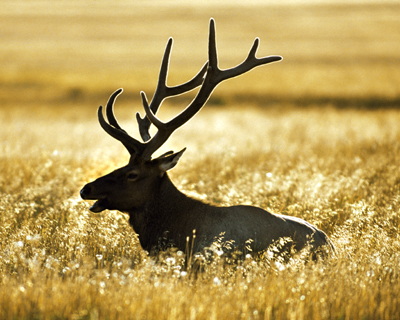
Rawatbhata
Rawatbhata is situated in Chittorgarh district of Rajasthan. It is also known as the Nuclear City of India. It has six units of 220 MWe each of atomic power. In addition, two more units of 100 MWe are being constructed. Rawatbhata is an ideal site for establishing nuclear power plants because of its rocky land, availability of abundant water and small population. The nuclear power is clean, environment friendly as it does not produce any harmful gases and waste. With increase in number of nuclear power plants at Rawatbhata, the town has seen lot of progress. The lifestyle of local population h has improved. There are many beautiful places in and around Rawatbhata. People from outside visit these places like Baroli temple, Bhains Road Garh Fort, Parajhar Water Fall, Charbhuja Temple and Hanuman Temple. Madhur Bhatiya
V C

The Elk
The elk is a member of deer family. It is called as moose in North America. It is also found in North Scandinavia, East Poland and Siberia. Elks are excellent swimmers. They dive into lakes in search of water lilies and buckbeans. It has long legs, a heavy head, big lips and a flap of skin called the bell hanging from the throat. In winter they eat pine shoots, barks and twigs while in summer they eat tender leaves. The death cup mushroom is a special delicacy for elks. Unlike other deer species elks do not form herds, they prefer living alone. If the vegetation gets sparse they may get together and migrate in search of fresh pasture. Baby elks are often attacked by bears and wolves if they get separated from the mother. But an adult elk can kick hard enough to smash the skull of a bear. The antlers of the elk are unique. They are shaped like palms with many short, pointed fingers. They are shed in every winter. A female elk or cow does not have antlers. She gives birth to calves at the end of April or May. Baby elks follow their mothers and learn what leaves and barks best suited for eating. Once they have grown up and are capable of fending for themselves, they are chased away by their mother.
Research on the elk milk has revealed that it contains 10% fat and ahs medical properties. Elk milk is used to treat gastric ulcers. Elk can be domesticated and can serve man as draft animals. The elk has life span of 20-25 years. They mostly die of disease or due to attacks from predators.
Ashutosh Gupta
X A
